MyPortugalHoliday.com
The best independent guide to Portugal
MyPortugalHoliday.com
The best independent guide to Portugal
Portuguese Desserts: A Guide to the Classics for 2026
Beyond the world-famous Pastel de Nata, Portugal’s dessert tradition offers a deep and varied exploration of the country's history. Many of these sweets, known collectively as doçaria conventual, were perfected in convents, where nuns skilfully transformed simple ingredients like egg yolks, sugar, and cinnamon into an astonishing array of puddings, mousses, and cakes.
This heritage results in a dessert culture that prizes richness and texture over elaborate decoration. From dense, caramel-drenched puddings to ethereal, cloud-like meringues, the offerings are a fundamental part of the dining experience. For visitors, a dessert menu can present a list of unfamiliar names, making it difficult to choose between a 'Pudim de Ovos' and a 'Pudim Molotov'.
This guide explains Portugal's most essential desserts. It details what makes each one unique, what to expect in terms of flavour and texture, and the story behind it, helping you find the perfect sweet to end your meal.
Rich Puddings & Creamy Custards
These desserts are the heart of the Portuguese menu, defined by their smooth textures and comforting, rich flavours derived from eggs and milk.
Pudim de Ovos
The quintessential Portuguese flan. This is a dense, smooth egg pudding baked gently in a water bath until perfectly set. Its defining feature is the rich, dark caramel sauce made in the baking mould itself, which pools around the base when served. Expect a firm, creamy texture and a straightforward, comforting taste of sweet caramel and egg.
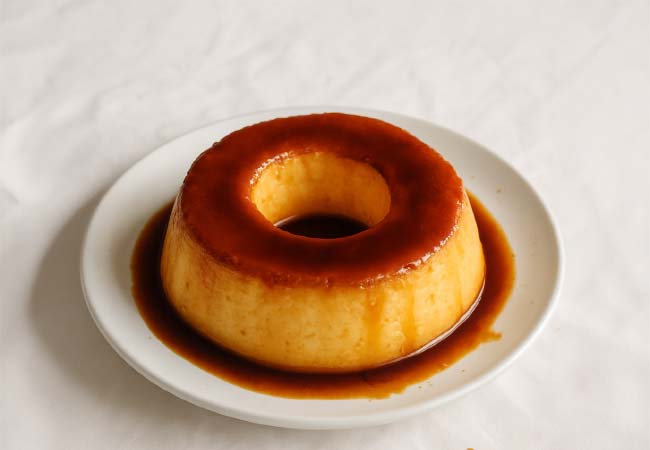
Arroz Doce
A deeply comforting sweet rice pudding, traditionally served at celebrations. The Portuguese version is exceptionally creamy and custard-like, enriched with egg yolks and infused with lemon peel and a cinnamon stick. It is often served with intricate patterns stencilled on top with ground cinnamon, making it as beautiful as it is delicious.
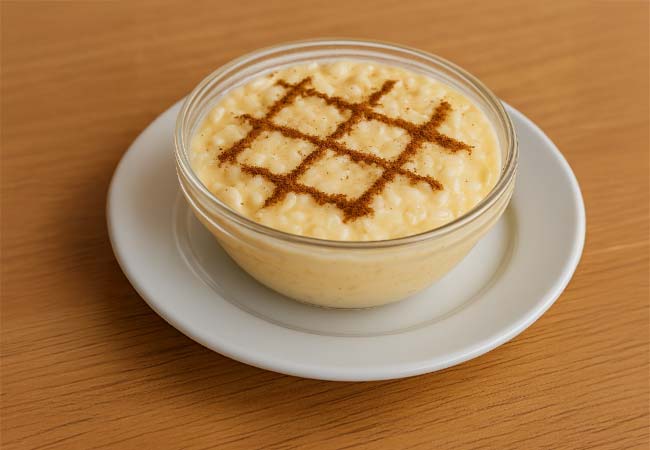
Leite Creme
Portugal's popular cousin to crème brûlée. This stovetop custard is made with milk, thickened with egg yolks and cornstarch, and flavoured with lemon or cinnamon. The result is a lighter, yet still luscious, custard. Its defining moment comes when a layer of sugar is caramelised on top with a hot iron, creating a brittle, glassy crust to crack with your spoon.
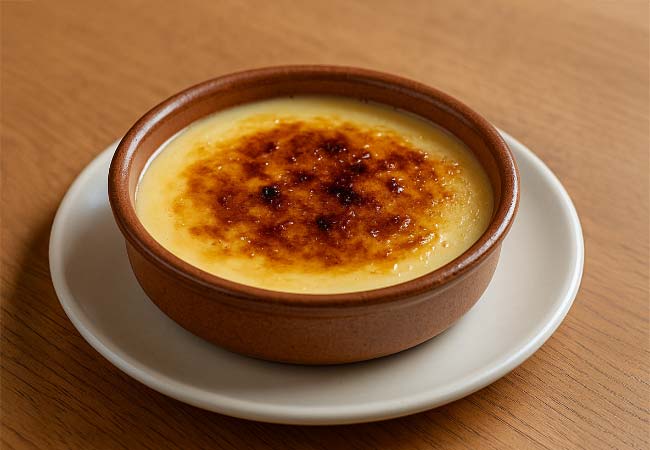
Baba de Camelo
The name translates to 'camel’s drool,' but this dessert is one of Portugal's most popular and simple pleasures. It is a rich and velvety caramel mousse created from just two primary ingredients: condensed milk and eggs. The flavour is a deep, sweet caramel, derived from cooking sweetened condensed milk until it becomes a form of dulce de leche. This rich base is then lightened with fluffy egg whites, resulting in a smooth, airy texture.
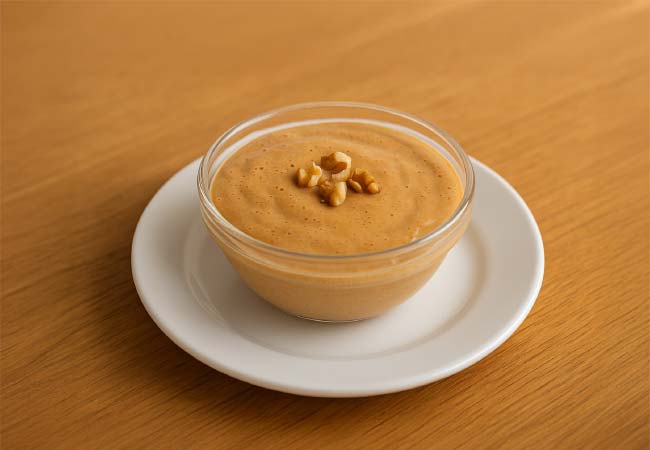
Pudim Abade de Priscos
This is the most decadent and complex pudding in Portugal. Created by a 19th-century abbot from Braga, this dessert uses an astonishing number of egg yolks, Port wine, and a secret ingredient: cured pork fat. The fat gives the pudding an incredibly smooth, velvety texture and a subtle savoury depth that balances the intense sweetness. It is a unique gastronomic experience for the adventurous diner.
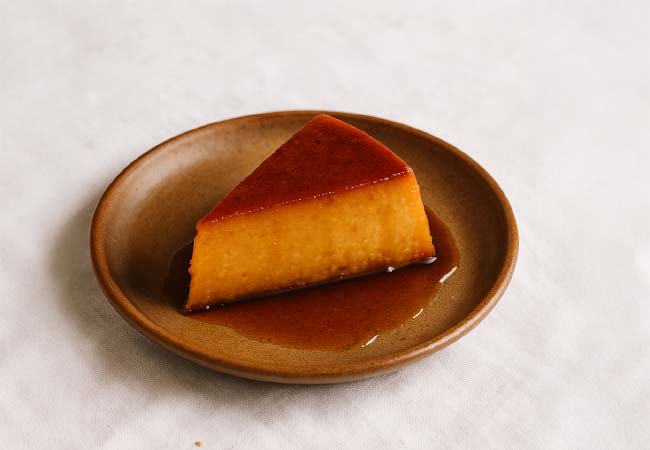
Mousse de Chocolate
Though international in origin, chocolate mousse has been fully adopted and perfected in Portugal. The local style is defined by its intensity, using high-percentage dark chocolate for a deep, slightly bitter flavour that is significantly less sweet than other versions. The texture is a paradox: dense and rich from the egg yolks, yet lightened with folded egg whites. It is a reliable and satisfying end to any meal.
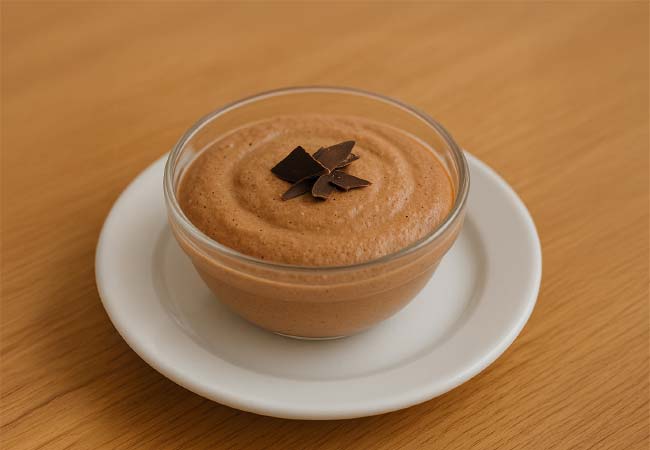
Light Meringues & Layered Cakes
This category moves away from dense custards to lighter, airier creations and no-bake cakes built on the nation’s favourite biscuit.
Pudim Molotov
Despite its name, this is not a pudding but a towering, cloud-like baked meringue. Born from the need to use up leftover egg whites in convents, this dessert is incredibly light and airy, melting almost instantly in the mouth. The simple, sweet flavour of the meringue is balanced by a generous pouring of rich caramel sauce and often a scattering of toasted almonds for crunch.
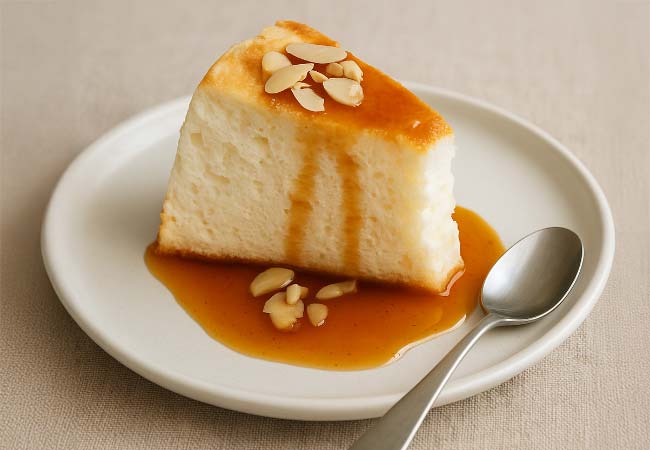
Farófias
Perhaps the most delicate dessert on the menu, Farófias are soft clouds of meringue poached in milk infused with lemon and cinnamon. Their texture is exceptionally light, soft, and moist. They are traditionally served draped in a sweet egg cream made from the leftover yolks, ensuring no part of the egg goes to waste.
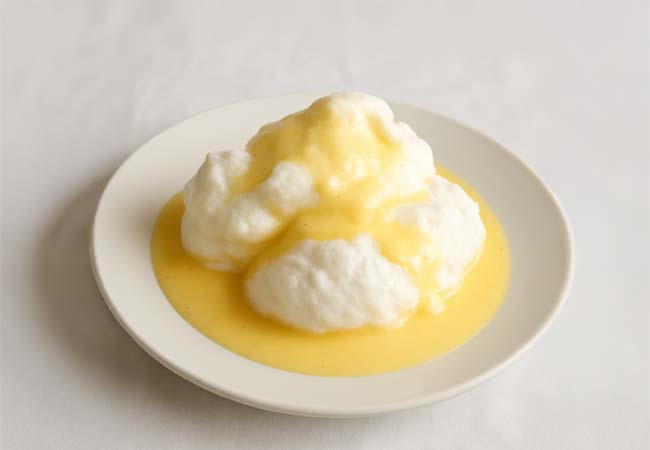
Bolo de Bolacha
A nostalgic, no-bake "cake" beloved in Portuguese homes. It is built by layering Bolacha Maria (a simple, crisp biscuit) soaked in strong black coffee with a rich, traditional buttercream. The buttercream is made with butter, sugar, and raw egg yolks, which gives it a distinct density and custardy flavour. After resting in the refrigerator, the biscuits soften into a cake-like consistency, creating a perfect slice with defined layers.
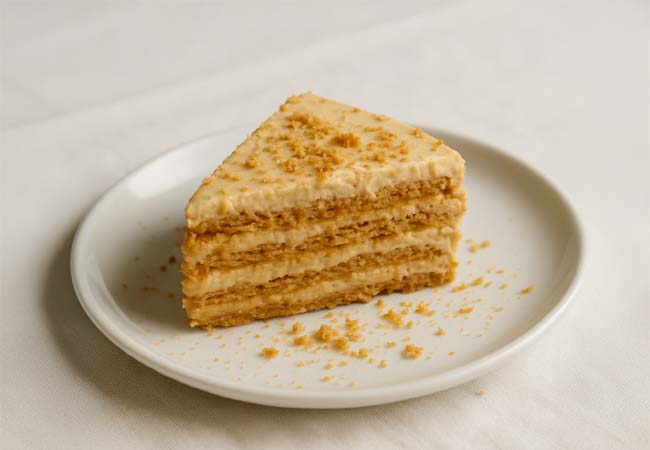
Tentação
A modern classic that is Portugal's answer to Tiramisu. This no-bake dessert layers coffee-soaked Bolacha Maria biscuits with a sweet, luscious cream made from condensed milk and whipped cream (natas). After chilling, the biscuits soften and the flavours meld into a comforting and decadent treat that lives up to its name – Temptation!
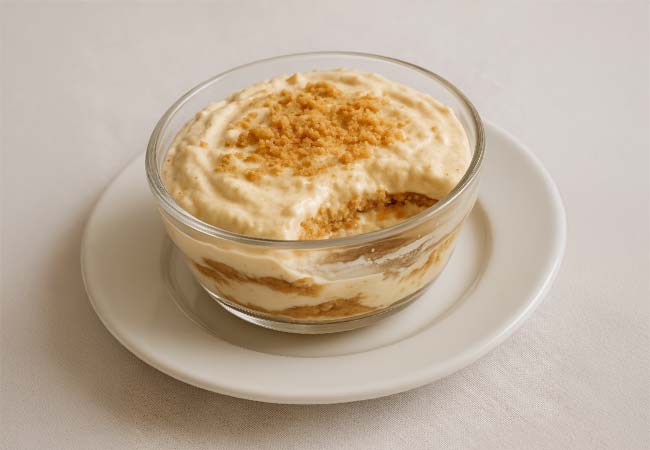
The final meal ritual: Coffee
In Portugal, a meal does not simply end; it is formally concluded. After the dessert plates are cleared, the final and non-negotiable ritual is coffee. This is not the leisurely, milky coffee of the morning but a quick, potent, and deeply ingrained social custom. The standard order is a simple espresso, a drink whose name changes regionally but whose purpose remains the same.
Served in a small, pre-heated demitasse cup, Portuguese coffee is typically a dark, robust roast with a thick crema, delivering an intense shot of flavour designed to cut through the richness of the preceding meal. It is seen as an essential aid to digestion and a moment of punctuation before returning to the day. To skip this step is to leave a sentence unfinished, making it an essential cultural experience for any visitor.
Classic Dessert Pairings
Beyond coffee, the traditional way to conclude a Portuguese meal is with a small glass of a digestif. The most classic and sophisticated choice is Port wine. A glass of aged Tawny Port, with its notes of nuts and caramel, is the perfect companion to egg-based puddings like Pudim de Ovos and Leite Creme. For a rich Mousse de Chocolate, a younger, fruit-forward Ruby Port is a superb match.
Another popular choice is a national liqueur. Licor Beirão, a sweet and aromatic spirit made from a secret blend of herbs and seeds, is a favourite across the country. You may also see Amêndoa Amarga, a bittersweet almond liqueur, offered as a final treat.
Discover more of central Portugal with our guides
If you've found our content valuable, we'd welcome your support.
The digital publishing landscape has evolved significantly. As a small independent publisher, we face growing challenges. Search engines increasingly favour paid content over organic results, while AI-generated content often reproduces original work without attribution.
To support our work, please consider bookmarking this page (press Ctrl + D) for quick access. If you find an article helpful, we'd be grateful if you'd share it with friends on social media.
For specific questions, please see our Reddit community at r/LisbonPortugalTravel.
Should you notice any outdated or incorrect information, please contact us at [email protected]
Thank you for helping us continue to provide valuable content in an increasingly challenging digital environment.





















